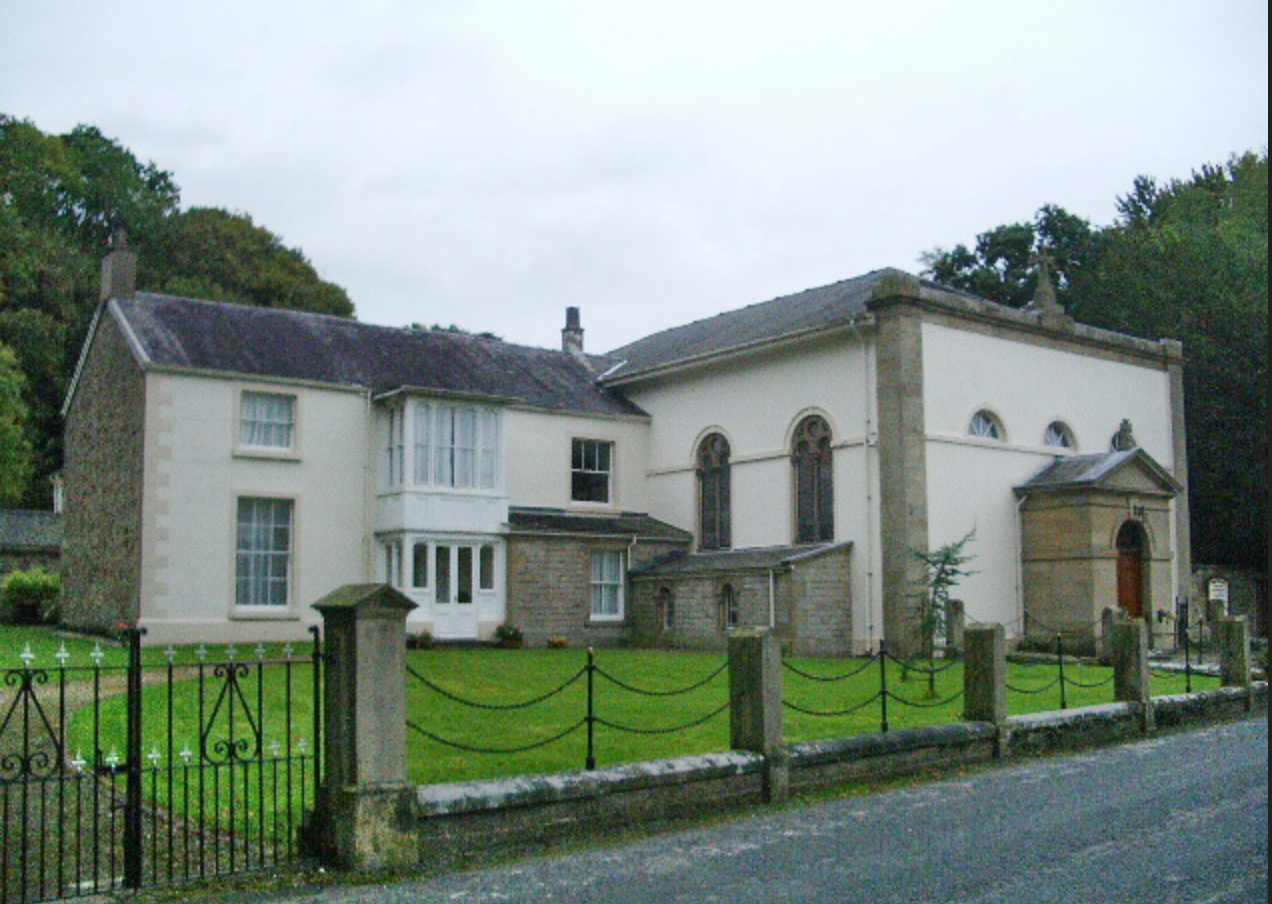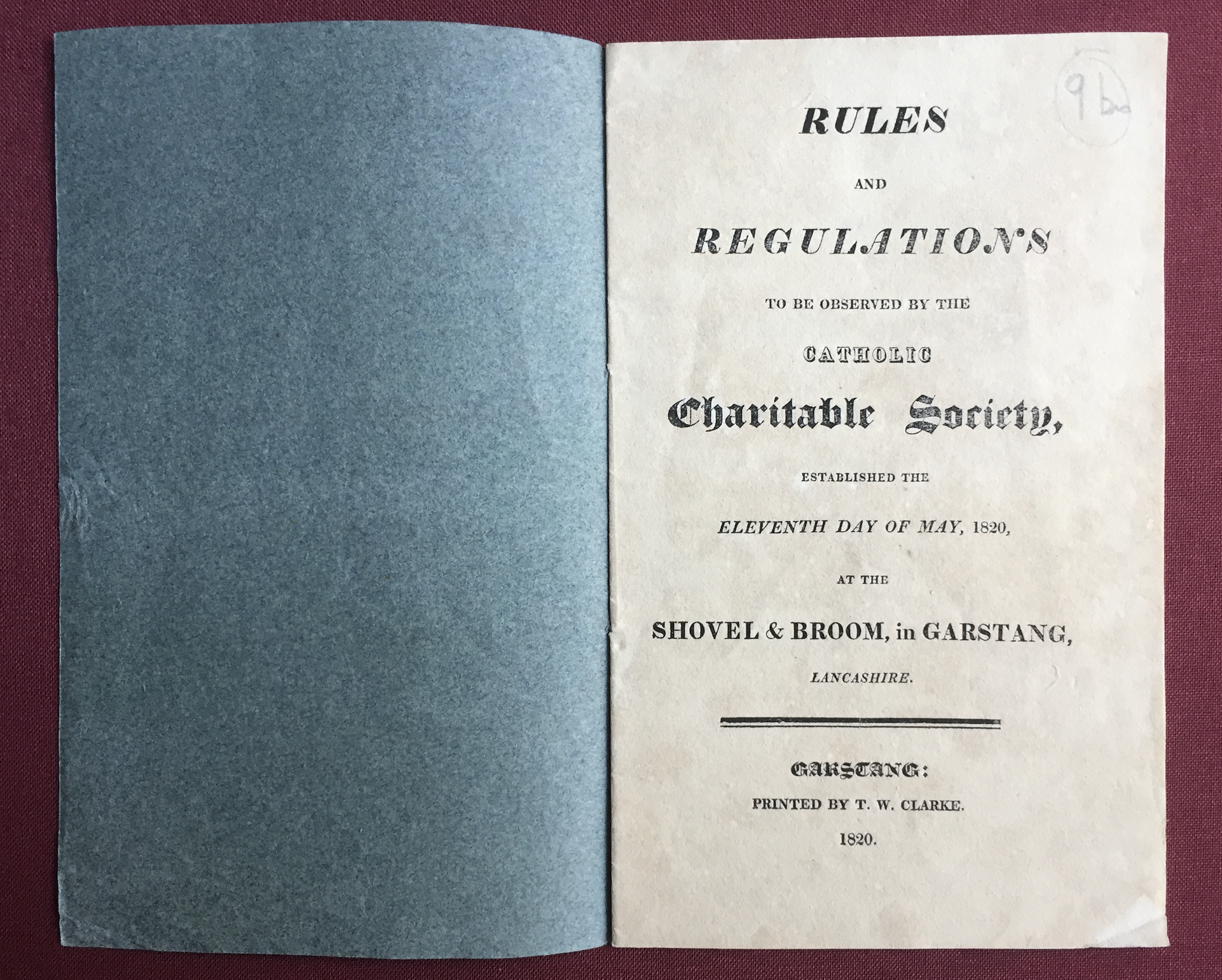Claughton, Garstang, and Rome: the Gradwell family and Catholic charitable endeavour in Lancashire, 1820
In 1820, Dr Robert Gradwell (1777–1833) was busy in Rome attending to his many new duties and responsibilities as rector of the then recently re-opened Venerable English College.
Dr Robert Gradwell (1777–1833)
When the college buildings were restored to the secular clergy of England and Wales in 1818 and Robert Gradwell was appointed rector, there was everything to be done:
repairing the immense damage caused by many years of occupation of the property by French troops who had sequestrated the college shortly after the French invasion of Rome in 1798;
attending to the perilous state of the late medieval college church of the Most Holy Trinity and St Thomas of Canterbury, the roof of which had already been in a state of near-collapse even before the French occupation, and which by 1820 stood in total ruination;
salvaging the wreck of the college library and supervising the construction of what is known today as the Third Library;
re-housing the college archives, which had been sold off en bloc by the French, fortuitously purchased by a friend of the college, and ultimately returned, apparently largely intact, in 1818;
attending to the education and welfare of ecclesiastical students from England and Wales – candidates for the priesthood – who had begun arriving in Rome from December 1818 onwards.
In a wider international context, Gradwell was increasingly being implored by Ambrose Maréchal (1764–1828), archbishop of Baltimore, to take on the additional onerous role of North American agent in Rome. By 1821, Gradwell had become the representative in Rome of the dioceses of Baltimore, Philadelphia and Québec, acting as a ‘middle man’ in the dealings of the North American bishops with the Curia in Rome.
Despite all of these pressures and demands on his time and expertise, and his full engagement with all of these issues, Robert Gradwell still made time to keep in touch with his beloved native Lancashire. There, from 1809 until 1817, he had served as a priest at Claughton-on-Brock. The small rural mission of Claughton (pronounced ‘Clyton’) lay a short distance south-east of the market town of Garstang, mid-way between Lancaster, to the north, and Preston, to the south, and Gradwell’s memories of his years of ministry in that area were evidently happy ones.
Part of the map entitled The County Palatine of Lancaster, published in 1788, at a scale of approximately one inch to one mile, by the Liverpool-based cartographer, William Yates (1738–1802). Claughton is marked on the map, roughly mid-way between Preston and Lancaster.
During his years in Rome, from 1817 until his appointment in 1828 as coadjutor to James Bramston, the vicar apostolic of the London district, Robert Gradwell maintained close links with family and friends, clerical and lay, in Lancashire through regular correspondence. The regular flow of information from Lancashire to Rome was facilitated by the fact that in 1817, on Robert Gradwell’s departure for Rome, his younger brother, Henry Odo Gradwell (1792–1860), then newly ordained as a priest, had succeeded him, taking full charge of the Claughton mission, where he remained until his death.
The Presbytery and Church of St Thomas the Apostle, Claughton-on-Brock, Lancashire, today.
Built in 1794, the Presbytery was extended by Robert Gradwell during his years in charge of the mission, from 1811 to 1817
In an age long before state social welfare support, voluntary charitable societies were already well-established among the Catholic community of the north-west of England by the early nineteenth century. Given Robert Gradwell’s continuing engagement with his family and friends in Lancashire, it is no surprise to discover, from his surviving papers in Rome, that he took a personal interest in the new Catholic charitable society established at Garstang in 1820. The new organization had a long pedigree.
As early as 1731, a Catholic charitable society had been founded in Preston, almost certainly at the White Bull Inn in the centre of the town, ‘for the purpose of relieving the sick and needy Catholics of Preston, and for the purpose of bestowing spiritual benefits on the members and their wives during life and after death’.[1] Among the group of Catholic lay men, or ‘Catholic Brethren’, as they styled themselves, who subscribed to the foundation of the Preston society at its first meeting on 6 June 1731, had been one Henry Gradwell, almost certainly a forebear of Robert Gradwell.[2]
In 1787, apparently in the aftermath of a smallpox epidemic in the farming community at Broughton, just north of Preston, and amid the ensuing penury that had hit many families in the area at that time, the Broughton Catholic Charitable Society (BCCS) had been founded by another group of lay men: that society continues to flourish down to the present day.[3] Robert Gradwell’s brother, the Reverend Henry Gradwell of Claughton, lent his support to the BCCS, becoming a member in 1819,[4] and he also became a member of the new Garstang Catholic Charitable Society in 1820. Lying on the great north-western post road from London to Edinburgh, Garstang was at that time an important staging post for mail and passenger coaches, with thirteen public houses and taverns at one time in the town. Appropriately, the new Catholic charitable society was founded at one of these hostelries — the Shovel and Broom, depicted below.
The Garstang Catholic Charitable Society was founded in 1820 at the Shovel and Broom, Garstang, known since the 1860s as The Farmer’s Arms. In the period before the passing of the Catholic Emancipation Bill in Britain in 1829 — and for many years afterwards — the non-existence of church halls and the need for the Catholic community to maintain a low profile resulted in Catholic public meetings being held discreetly in the upper rooms of inns and taverns in cities, towns and villages throughout the kingdom.
Among Robert Gradwell’s surviving papers in the archives of the Venerable English College in Rome is an extremely rare – and possibly unique – copy of the rules of the Garstang society of 1820: this was presumably sent to him in Rome, by his brother at Claughton, to keep him abreast of new developments in the area. Owing to the precious nature of this ephemeral document, and the light that it throws on Catholic charitable endeavour in Lancashire at that period, it has been reproduced below in its entirety.
Despite diligent research, no further reference to the Garstang society, beyond the surviving 1820 rule-book has, as yet, been discovered. A number of questions present themselves:
did Dr Robert Gradwell in Rome himself become an ‘overseas’ member of the Garstang society, following its launch?
did he provide financial support to the new organization?
did the society at Garstang develop after 1820, or did it meet an early demise?
In the apparent absence of relevant records in Rome or in Lancashire, we may never have precise answers to some of these questions. However, given that, in the early 1820s, there were already two other well-established Catholic charitable societies operating in close proximity to Garstang – in Preston and at Broughton – and that there was already some overlap of membership of those two societies, as evidenced by their surviving membership records, the creation of a third organization with aims closely akin to the other two may have proven to be a non-viable and unsustainable proposition: the society may simply have petered out during the 1820s.[5]
Exactly two hundred years on from the foundation of the Garstang Catholic Charitable Society, it is clear, however, from its rule-book that members of the Catholic community of the area had, in 1820, a highly developed sense of responsibility for both the material and spiritual welfare of their neighbours.
Despite the progress of two centuries, what is equally clear in the troubled world of the present day is that voluntary charitable endeavour is as much needed today as it was in the days of the Gradwells of Claughton and Rome.
________________________
[1] Bernard F. Page, SJ, History of The First Catholic Charitable Society of Preston: Some Account of its History and Work (Preston, 1923), p. 45.
[2] James F. Splaine, SJ, History of the First Catholic Charitable Society, with notes by Joseph Gillow (Preston, 1895), p. 12.
[3] The website of the Broughton Catholic Charitable Society can be found at: broughtonsociety.co.uk The early success of the Broughton society is attributable to the work of Peter Newby (1745–1827), its secretary from 1787 to 1823. Educated as a seminarian at the English College, Douai, Newby did not proceed to ordination as a priest, pursuing instead a career as a lay schoolmaster and poet: see Maurice Whitehead, ‘Peter Newby (1745–1827)’, in Oxford Dictionary of National Biography (Oxford University Press, 2004), doi.org/10.1093/ref:odnb/64186
[4] Frederick Odo Blundell, OSB, Broughton Catholic Charitable Society: History – 1787 to 1923 (Preston, 1923), p. 41.
[5] Any reader with knowledge of further evidence of the activities of the Garstang society is invited to contact the present writer at: researchfellow@vecrome.org
________________________
Archivum Venerabilis Collegii Anglorum de Urbe (AVCAU), Scritture, 65/2/9bis









